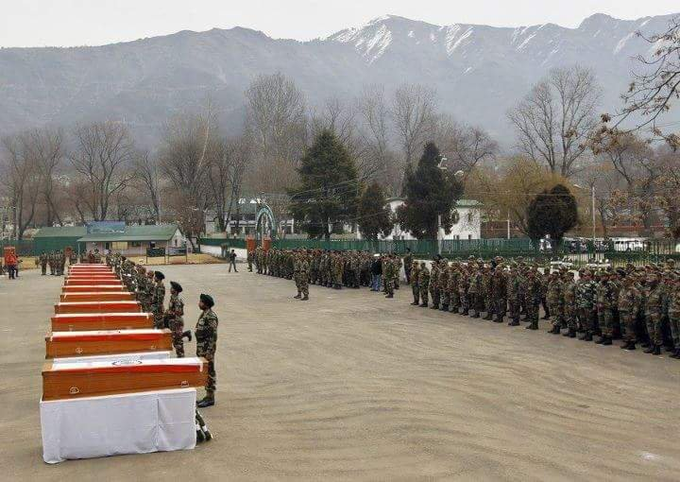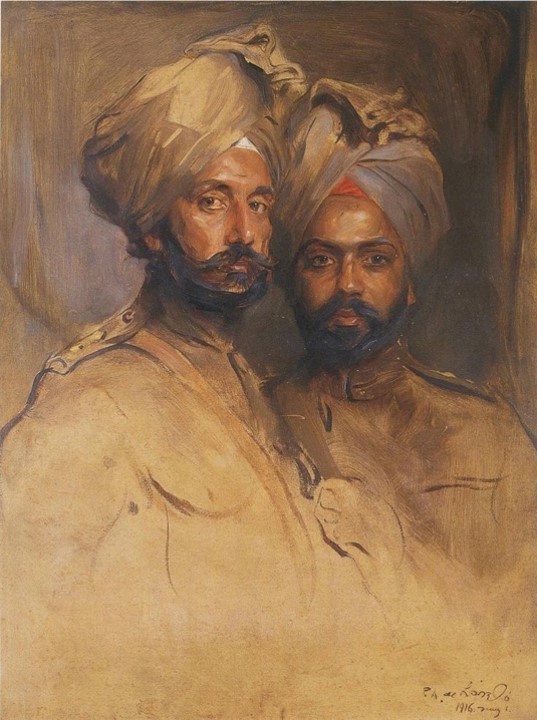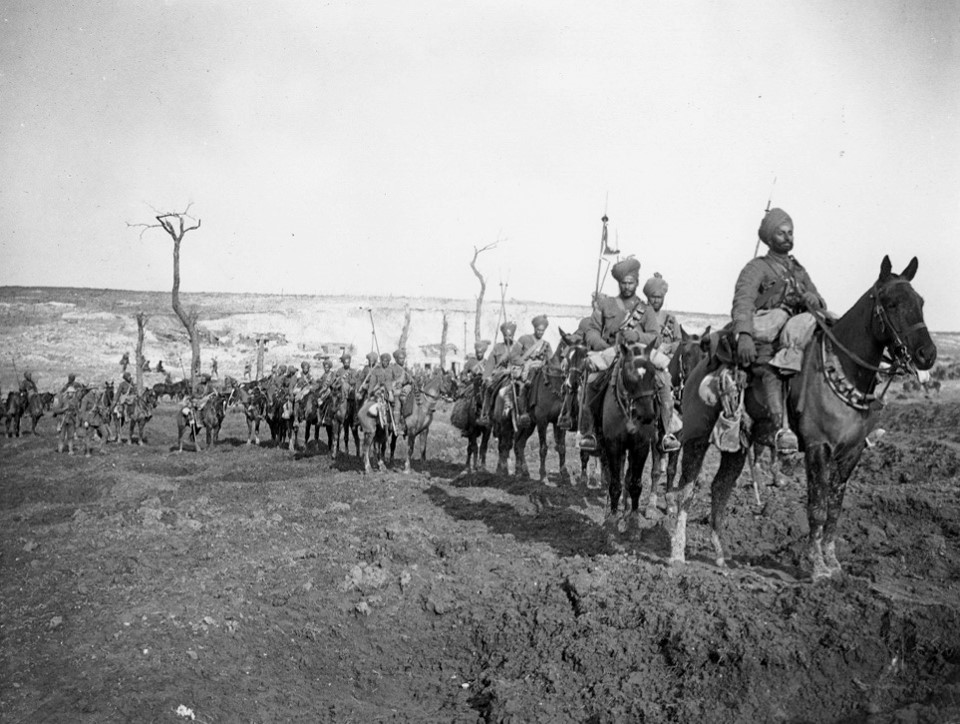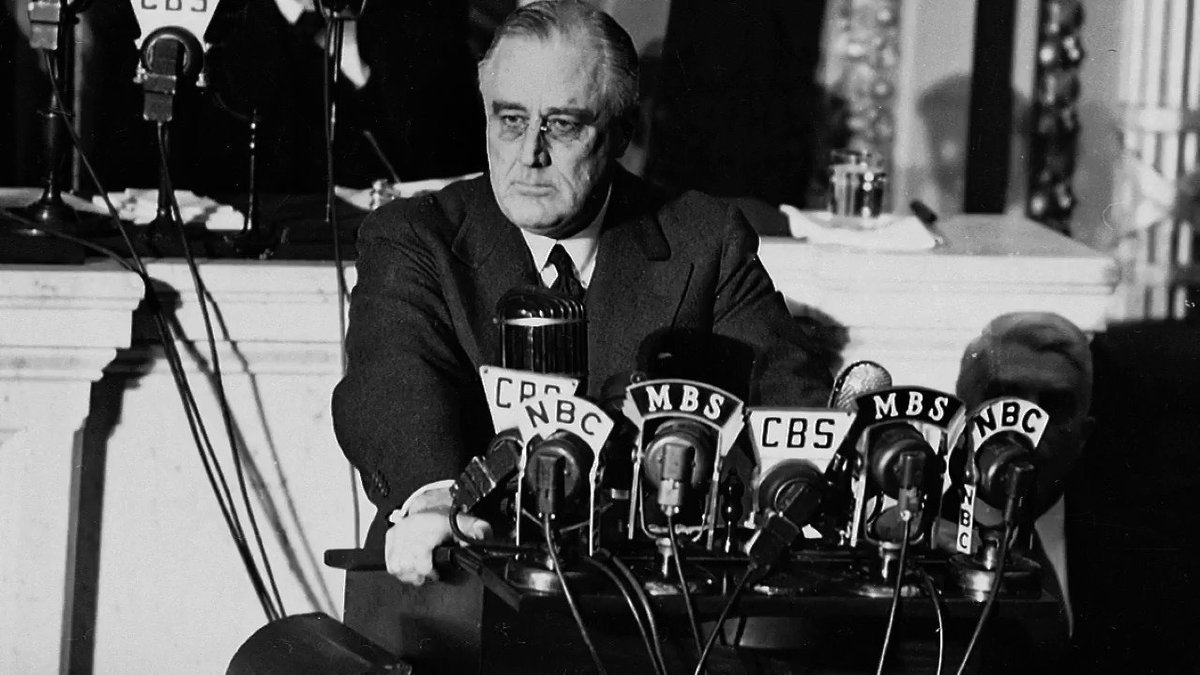7 SIKH completed the relief of 1 Sikh. One company of 1 Sikh was, however, retained in the area as reinforcement for 7 Sikh.
7 Sikh was now disposed as under:-
Battalion HQ & two companies - Kupwara
Company less one platoon & a section field guns - Drugmul
One Platoon - Wodhapur
Once Company - Handwara
Company 1 Sikh (Reserve) & a troop of armoured cars - Handwara.
Cold and snow would reduce the activities of these troops to local patrolling for sometime soon hereafter.
This rather passive policy encouraged the enemy to spread out and come closer and closer to the forward Indian posts.
Maj Gen Kalwant Singh issued instructions that 50 Para Brigade on the right was to secure Ambli Dhar feature near Naushera while 19 Independent Brigade Group on the left was to secure Kaman Gosha Gala.
In implementation of this plan, Brig Usman too issued instructions on the same day.
On the right, 2 Jat less detachments, supported by a troop of 30 Mountain Battery and mortar detachments of 3 (Para) Rajput was to secure area Pt. 3319.
On the left, 1 Rajput, supported by 5 Mountain Battery, was to secure area Pt. 2916.
Both objectives were to be captured by 0600Hr on 1st Mar 1948.
CO 2 JAT issued instructions for the attack on Ambli Dhar - code named 'Bharatpur'.
In order to gain surprise, the attack was planned to be a silent one at dawn after an approach march. Ammo point and forming up place for the attack were selected ..
.. and arrangements were made to mark them with white tapes.
In order to mislead the enemy, a deception plan was made; 'C' company was to demonstrate in the easterly direction towards Bhata Village a day prior to the attack.
RIAF too would pitch in.
The RIAF carried out an offensive recce of the track from Kamila to Bhata via Darhal & Giran in support of 50 Para Brigade attack on Ambli Dhar.
In addition to this, Pt. 3319 was also bombed at 1700Hr.
As part of deception plan, 'C' Company of 2 Jat moved in an Easterly direction towards Bhata Village.
The demonstration by 'C' Company proved successful as events on 01 Mar 1948 showed.
The enemy didn't realize the threat of the main advance until the Jats were half way up for the attack on Ambli Dhar.
Moreover, the noise of 'C' Company's firing did help the main attacking column in approach march, for the noise made by their boots on rocky patches wasn't heard by enemy.
Plan of 'Operation Bharatpur'.
Photo: Official History of 1947-48 Ops, History Division, MoD
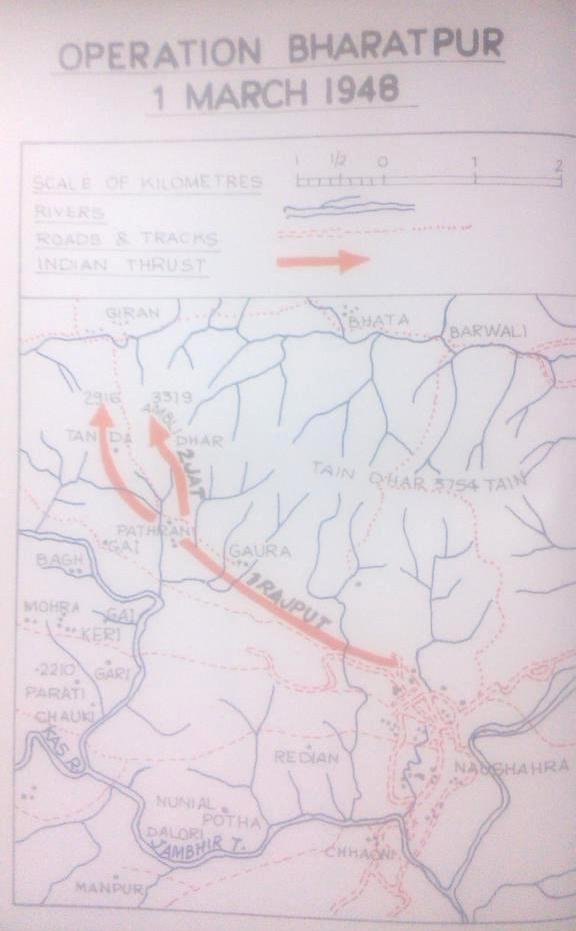
The area of the feature had been divided into three small bounds. The first bound was reached before daylight.
There was opposition during the advance was when moving to the second bound. The enemy suddenly opened up with all he had, and the Jats ..
.. suffered their first casualty - one wounded. The leading platoon, however, continued the advance, using grenades, and LMGs against the enemy.
Pt. 3319 was captured and the leading company took up position on the objective & engaged the retreating ..
.. enemy by fire. The enemy disappeared in the low, broken ground about 180m away.
Now followed a 30 minute lull, a very treacherous lull indeed, for the enemy was getting ready for a counter attack.
The skirmishers had gone forward to keep in contact with the enemy.
They collected eight dead Pathans and some rifles at the edge of the Nala. But the enemy attacked in groups of 20s & 30s soon thereafter and took away their dead and arms away.
Shortly after this, the enemy counter attack developed on the eastern side of the objective. But by this time the remaining two platoons of 'D' Company were in position on the West.
With the combined efforts of 'A' & 'D' Companies, the counter attack was repulsed.
Soon thereafter, it was learnt that another counter attack was developing.
'B' Company, that was in reserve, was now brought forward. This again tilted the balance and the second counter attack too was easily repulsed.
Thus beaten comprehensively, the enemy decided to call it a day and didn't trouble the Jats anymore, having lost about 80 men either killed or wounded!
The victory on Ambli Dhar owed much to the grit and bravery of the Jats.
Meanwhile, on the left, 1 Rajput were directed against Pt. 2916. Their task was to capture this feature and protect the left flank of 2 Jat, while the latter captured Pt. 3319 and established a picquet there.
1 Rajput left Naushera Camp at 2355Hr on 29 Feb & captured the objective by 0530 Hr on 01 March.
The Rajputs returned after the Jats had established the picquet as tasked.
While 50 Para Brigade secured Ambli Dhar, 10 Independent Brigade Group made a thrust towards Kaman Gosha Gala to the left.
4 Dogra & 2/2 Punjab were assigned the task of clearing this feature.
At 0400Hr on 1 March, 'B','C' & 'D' Companies of 2/2 Punjab concentrated in order to establish picquets at Pt. 2999 & Pt. 3574.
'B' and 'D' Companies, supported by 4 Dogra, led the attack on Pt. 2999 & captured it without difficulty. 'C' Company 2/2 Punjab and a company of 4 Dogra then advanced to attack the enemy at Pt. 3574.
They were however, pinned down by the enemy on a ..
.. higher, dominating feature.
Another company of 4 Dogra trying to reinforce them from the right bumped into this enemy party about 60 strong, trying to outflank and attack the forward companies.
Arty bombardment and aerial strafing helped retrieve the situation and at about 1000 Hr Pt. 3574 was captured.
Picquets were established at Pt 2999 and Pt 3574.
Enemy continued to heavily snipe the picquet at Pt. 3574 till 1630 Hr. He also fired at Pt. 2999 from a nearby feature, but was driven away after an attack by 2/2 Punjab.
After the capture of Ambli Dhar on 01 Mar 1948, 1 Rajput had concentrated in area Pt. 3574 with the intention of occupying the ground around No.1 Bump near Katora Khori in order to enable 'B' Company 2/2 Punjab to establish a picquet on the next feature.
At 0030Hr 05 Mar, 1 Rajput moved forward from the assembly area.
'D' Company led the attack. It was halfway up the objective when the enemy opened up with two MMGs, two LMGs & about 100 rifles.
The company tried to assault but couldn't do so due to the steep slope.
The company commander, though wounded, kept his company in position against heavy odds until the 'C' Company attacked and captured the objective. Enemy withdrew at about 1015Hr after suffering heavy casualties.
1 Rajput suffered 10 fatal casualties and 32 wounded, including the company commander.
While 1 Rajput held the Bump, 'B' Company 2/2 Punjab captured its assigned objective by midday.
Consequently, with its task completed, 1 Rajput returned to base by midnight.
By now JAK Force had secured the Ambli Dhar feature & the Kaman Gosha Gala.
It was now ready to commence the operation for recapture of Jhangar, codenamed 'Operation Vijay'.
Maj Gen Kalwant Singh issued instructions for recapture of Jhangar.
'Operation Vijay' was to be carried out in 2 phases.
Phase 1: 19 Independent Brigade Group was to secure Pt. 3327, Pt.3283 and exploit towards the Nakka Gap. The road from the objective to Naushera was to be opened as early as possible.
Time of start of this op would be the 'D' Day.
Phase 2 - 50 Para Brigade Group was to secure objectives Pt.2701, Jhangar. Pt.3399 & Pt.3374.
The defence of Naushera area and local administration of Naushera garrison, was to be the responsibility of Naushera Garrison comprising of 2/2 Punjab, 2 Jat, 2 Rajputana Rifles and ancillary units.
Own troops at Ambli Dhar & Kaman Gosha Gala were to secure the flanks and support the advance of 19 Infantry Brigade.
In Handwara, the commander of the company of 7 Sikh, whilst on patrol, was seriously wounded in a sharp engagement near Village Bakihakar within 3 km of Handwara. The patrol asked for reinforcements. Two platoons were sent out from Handwara and the patrol extricated.
Heavy snowfall would soon render further patrolling difficult from 06 to 21 March 1948.
Meanwhile in Mahura, 4 Kumaon had been actively probing the enemy. On 4 Mar 1948, a company strength fighting patrol was sent to attack the feature Pt. 7760 - a strong enemy position.
The patrol caught the enemy by surprise & killed 35 by a bayonet charge!
In Poonch, the RIAF planned to provide the garrison with a reserve of a month's supply of all its requirements in March. This would entail a total of 420 sorties in March in addition to the normal commitment of 7 sorties per day to keep the Poonch ..
.. garrison supplied for its day to day needs.
On 04 March, 27 sorties were achieved, but bad weather on 5th reduced it to only one.
Meanwhile on the ground at Poonch, another 'harvesting party' ex Poonch Garrison returned with more life sustaining foodgrain after 5 days of ops at the cost of seven fatal and eight non fatal casualties to the protection parties.
Heavy rains in and around Naushera delayed the planned execution of 'Operation Vijay' for recapture of Jhangar.
Heavy rains also forced suspension of all RIAF sorties to Poonch. The RIAF would only be able to fly after a week.
An enemy force of two platoon strength made an assault on one of the picquets of Skardu Garrison, with their mortars giving covering fire. This attack too was beaten back like the ones before it, and the raiders left behind one dead, with no casualties to defenders.
10 March
After weather prevented execution of 'Op Vijay' for recapture of Jhangar, Maj Gen Kalwant Singh cancelled the previous instructions issued on 05 Mar 1948 & gave fresh orders for the operation.
10 March
JAK Div was to advance towards Jhangar in two parallel axes, with 19 Independent Brigade Group on the right and 50 Para Brigade Group on the left.
10 March
This plan was an improvement over the previous one since both brigades were to advance on different axes with 7 Cav between them on Naushera-Jhangar road.
Preliminary operations were to be completed by evening D Minus 1.
10 March
19 Brigade Group was to establish a firm base in a ring contour area, while 50 Para Brigade Group was to establish a firm base in area Pt. 3110.
After establishing these bases, the brigades were to advance on respective axes.
10 March
'A' Squadron 7 Cav was already in position in Naushera.
'C' Squadron was then operating in Akhnur area and was ordered to move to Naushera.
10 March
Move of this squadron was kept secret, in that:-
1. All tanks were camouflaged with wooden frames and tarpaulins so they looked like three-ton trucks from a distance.
2. The entire move from Akhnur to Naushera was carried out in hours of darkness.
10 March
3. Traffic & security arrangements were so worked out that at the time the tanks were on the road (at night), no other movement was permitted & no person allowed to come near the tanks.
10 March
4. On arrival in Naushera. the tanks were concealed and camouflaged in a detached area where no person was allowed.
10 March
Such was the secrecy that even Indian troops in Naushera were unaware of tanks in support till the D-Day!
These efforts paid rich dividends when the enemy too was caught unawares and total surprise was achieved by own troops.
10 March
Defence of Naushera area, including protection of Naushera - Seri Road and local administration of the Naushera garrison was to be the responsibility of the Naushera Garrison, under the command of Lt Col Kartar Singh.
Meanwhile at the UN, the fundamental difference between the US and British positions lay in the fact that the US was prepared in 1947-48 to recognize India's sovereign rights in Kashmir.
The difference between US and Brit approach emerged clearly in an exchange of views between their officials at the end of Feb. Quote from State Dept record dated 27 Feb:
"The US reps pointed out that they were disturbed by the possibly far reaching implications of ..
.. a Security Council resolution recommending the use of foreign troops from one party to a dispute in the territory of another party to the dispute.
The British reps at first attempted to minimize such an analogy by asserting that Kashmir was 'territory in dispute'.
US reps agreed that Kashmir was a state about which a dispute had arisen between India and Pakistan but stated that they found it difficult to deny the legal validity of Kashmir's accession to India.
In the end, the British reps agreed with the US point of view that..
.. we had to proceed on the assumption for the time being at any rate that India had legal jurisdiction over Kashmir.
When it was pointed out that a second objection to a Security Council recommendation that Pakistani troops ..
.. be used in Kashmir was that it was extremely doubtful that India would permit the implementation of such a recommendation, the British hastened to state that, of course, they had assumed that India would in the last analysis agree to the use of ..
.. Pakistani troops but only if 'morally compelled' to do so by virtue of a UN recommendation." Unquote.
The weak point in Marshall's position lay in his insistence that the US should adopt a common position with Britain.
He was 'particularly anxious to avoid presentation of competitive formal proposals by the British and ourselves and hoped that recommendations may be devised which we & the British can support. We must take care not to be responsible for adoption of recommendations..
.. which the British from the wealth of their experience might consider unworkable.'
These instructions meant that US views could be aired in public only to the extent that they were consistent with the British position.
Noel-Baker took full ..
.. advantage of this fact. His ceaseless efforts to push the Pakistani viewpoint earned him Karachi's gratitude. Passing through London in early March, Zafrulla met Bevin and 'expressed great satisfaction over the help given to him by Noel-Baker behind the scenes.'
Meanwhile, bad weather in Naushera had once again put the execution of 'Op Vijay' on hold.
As part of preliminary ops for recapture of Jhangar, 3 (Para) Maratha Light Infantry, with two forward observation officers, was sent on an offensive recce to locate enemy positions in Pir Thil area.
The advance commenced at 0830Hr on a two company front with 'C' company on the lest and 'B' company on the right. 'D' company was in reserve with battalion HQ.
The Marathas advanced on Pir Thil feature along the Southern approach, but were soon held up.
With a suddenness that showed perfect planning on part of the enemy, 'C' Company was pinned down by heavy fire on a low ground at about 1030 Hr. The company commander was soon KIA.
Another three soldiers were lost as they tried to retrieve his body in face of withering enemy fire.
The battalion headquarters in the rear was also subjected to 3-inch mortar fire & another officer was killed. Enemy was well entrenched on the spur and slightest ..
.. movement attracted accurate fire from MMGs. His mortars too seemed to have Indian positions well registered.
Att 1100Hr, Lt Col Harbans Sngh Virk, DSO, the Battalion Commander, ordered 'D' Company forward from its reserve role.
He pointed out the bunkered objective along the spur to the company commander and ordered its immediate capture at the point of the bayonet in order to extricate 'C' Company.
All bren guns of the battalion were brought to the forward line to support the attack.
As 'D' Company moved out to attack, word came across the wireless from the Brigade Commander, ordering a halt and a withdrawal to defensive positions in rear.
Lt Col Virk requested to be allowed to prepare defensive positions as far as the battalion had advanced instead of withdrawing.
Permission to do so was granted, and as was to be proved a few days later, it had an immense bearing on further ops.
Its immediate effect was bolstering the morale of the men.
They solidly dug in where they were, even as bullets whined around them. Barbed wire was a luxury and a few strands were strung across the forward positions.
Further ops were confined to guarding the flanks of 'C' Company from the enemy, who made several attempts to collect for an assault. 'D' Company countered the enemy moves from the left ridge and 'A' company from the right.
The Marathas suffered 5 killed and 13 wounded in this engagement.
Amongst them was the 25 year old Major Satyapal Chopra, who was commanding the 'C' Company that morning.
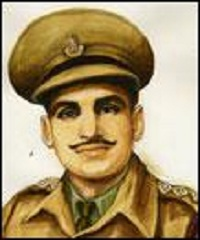
A well prepared enemy, held his fire till Major Chopra and his men were barely 185 metres away and in a very vulnerable position by the virtue of being in an open ground without any cover.
It was at this vulnerable point that the enemy opened up on them with an intense barrage of fire which included four machine guns and six other light automatics amongst other weapons.
The surprise was total, and deadly.
However, Major Chopra, unnerved by the sudden attack rushed forward with a platoon to a position to provide covering fire to his troops.
Realizing the precarious situation of his entrapped soldiers, he kept on firing despite being wounded in his face in the process
Major Chopra then turned to evacuate his injured soldiers lying on the open ground to safety.
He successfully manged to extricate three injured soldiers but when he was trying to evacuate the fourth soldier, he was shot through the head.
A true leader of men, Major Satyapal Chopra sacrificed himself for their sake. A grateful Nation would soon honour his supreme sacrifice with a posthumous Maha Vir Chakra.
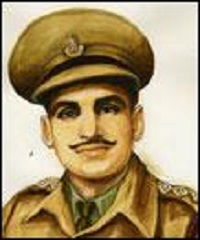
Meanwhile, it was a week since Maj Prithi Chand and his men had defied all predictions and reached Leh on 08 Mar 1948.
The State Forces detachment following them had arrived a few days later.
These folks were given a tremendous welcome from the locals.
That done, Prithi Chand briskly set about his task of raising and training a militia of local villagers for the inevitable face-off with the enemy.
In Skardu, Lt Col Thapa's lookouts saw some raiders marching off towards Gol, which was situated about 32 km East of Skardu.
On 16th Mar, a bigger body of raiders was seen hurrying towards Kuardo and Gol. Lt Col Thapa had been informed that a relief column under Brig Faqir Singh was expected to reach him on 18 Mar.
He immediately realized that the hostiles were going to intercept the column before it reached Skardu.
But he couldn't warn Brig Faqir Singh whose single wireless set had broken down near Kargil.
Thapa, however, reported the hostile movement to Srinagar, suggesting an airstrike on the raiders.
The RIAF, however, was committed elsewhere and no airstrikes took place.
Brig Faqir Singh's column entered the gloomy gorge of Thurgo, midway between Gol and Skardu, hoping to reach Skardu before long. The raiders were nowhere in sight.
Suddenly bullets began to rain down on the column from the steep heights on either side. The startled troops tried to rally and hold on, but soon 3-inch & 2-inch mortar bombs came crashing down among them, inflicting even more casualties.
The Brigadier himself was wounded, and panic prevailed. In the confusion, the enemy succeeded in looting the baggage train & the ammo boxes.
The column fell back, having lost 26 men killed, 7 MIA presumed killed & 18 wounded.
Equipment lost to enemy included 27 rifles, 5 sten guns, 2 Vickers Berthier machine guns, 64000 rounds of rifle ammo, 84 hand grenades, 51 HE bombs of 2-inch mortar & 204 HE bombs of 3-inch mortar.
Brig Faqir Singh reached back in Srinagar on 2 April, leaving his troops under Major Coutts at Kargil.
Thus ended the second attempt to reinforce Skardu.
Meanwhile, at the other end of the theatre, in light of the initial ops as part of 'Op Vijay' and info of enemy gained thereafter, Brig Usman modified his original plan.
He now decided to attack two places on Pir Thil feature about 360m apart with 2 battalions - 3(Para) Maratha LI on the right and 1 Patiala to the left.
3(Para) Maratha LI was to commence its attack seven minutes after 1 Patiala in order to get max arty support.
After 5 minutes of heavy arty concentration on each objective, the assault was to go in at 0700Hr.
Armour was to engage the enemy from rear.
Air Force was to isolate the southern part of the feature during the attack by offensive sweep & smoke.
Digging in earlier at the farthest point of advance (refer a few tweets above) now paid good dividend by giving the attackers a large area as 'jump off' area.
The Marathas moved off to the start line at 0400Hr on 17 Mar & crouched about 270m from the rugged face ..
.. of Pir Thil Nakka. The men of 'D' & 'A' Companies surged forward with the rest close behind, as arty tore up the hill face in front of them.
The terrified enemy opened up with MMG and Small Arms fire.
But it was now too little too late to stop the headlong rush of bloodthirsty Marathas hellbent on avenging the blood of their comrades lost two days ago.
The forwards platoons raised their war cry that had reverberated some years earlier at the epic battle of Keren.
As usual, when faced with a determined attack, the enemy broke contact and fled down the rear slopes in terror, as the Marathas clambered up the steep hillside.
The objective was captured without a single casualty to the Marathas.
Meanwhile 1 Patiala too had met with success. Heavy smoke and dust still covered the objectives when forward companies of 1 Patiala left the start line at 0700Hr.
Very rapid progress was made by them as well.
By 0720Hr, the leading troops assaulted the crest & broke through the first line of enemy defence.
The dazed &confounded enemy opened up with an MMG, an LMG, one mortar and some rifles, but all resistance was soon overcome & the enemy's first line crumbled.
His erstwhile defences were now a mass of rubble, pools of blood & mutilated bodies of those who thought they could hold off the Indian army.
Having captured the first line of defence, leading troops came under small arms fire from well-hidden strongly built & cleverly sited bunkers.
By sheer determination, they rolled up the enemy's second line of defence as well during the course of next 10 minutes, the same momentum carrying them on.
In this assault, company commanders of both leading companies - Maj Shamsher Singh & Capt Hazura Singh led from the front, showing brilliant leadership.
Sepoy Hari Singh of the left forward company too distinguished himself by killing four enemy ..
.. soldiers including a Captain of Pakistan Army.
The retreating enemy, atleast 150 carrying some 50 casualties, were spotted down the valley approx 900m away. They too were effectively engaged by own arty.
Pir Thil feature was in Indian hands by 0800Hr 17 March 1948.
Not content with this spectacular success, at 1030Hr, 3(Para) Maratha LI plus one company 3(Para) Rajput followed up this success by attacking Susoloti Dhar.
After a thorough beating at Pirth Thil, the enemy just didn't have the heart to offer resistance from this ..
.. feature. Only a few artillery rounds were fired on this feature to complete the discomfiture of the enemy and to compel him to flee towards Jhangar.
3(Para) Maratha LI captured the feature by 1258 Hr without any opposition whatsoever.
It was a decisive victory indeed and if not for administrative constraints, the victorious momentum would have easily taken Indian troops to Jhangar that very evening.
Alongwith 50 Para Brigade, 19 Brigade Group too had been actively moving ahead over the last few days since 14 Mar 1948, capturing a number of features in the process.
This day too, along with the Pir Thil attack, 1 Kumaon Rifles & 4 Dogra captured ..
.. the Gaikot Forest, killing about 60 enemy troops.
Way was now clear for the final attack on Jhangar!
At 0830Hr, 3 (Para) Rajput captured Pt. 3477 & by 1000Hr, Tactical HQ 50 Para Bde, 3 (Para) Maratha & 1 Patiala had concentrated at this feature.
The Brigade plan was to attack with two forward battalions - 1 Patiala on the right was to secure ..
.. Pt. 3399 & Pt. 3574.
1 Patiala less two companies concentrated at Pt. 3477 at 1030Hr on 18 Mar. The enemy had had a night's respite & was holding positions thinly with 2 LMGs & about a company strength, covering the withdrawal.
1 Patiala attacked with 2 companies.
After a brief arty and mortar shoot, the objective was captured by 1245Hr - the troops clambering up the height literally at the double!
From hereon, both companies leapfrogged, making bounds of about 900m each.
The leading company, by 1400Hr, came under fairly accurate auto and small arms fire from enemy sangars around Pt. 3574.
This was the last enemy position overlooking Jhangar, which was now desolated & deserted!
On the left, 3 (Para) Maratha LI had captured Pt. 3399 by 1300Hr. At 1315Hr, own mountain guns had registered and engaged targets on Pt. 3574 from where two automatics & 25 rifles were firing on 1 Patiala.
Then 1 Patiala attacked a ring contour & 3 (Para) Maratha LI attacked Pt 3574 simultaneously.
Both objectives were secured by 1500Hr on 18 Mar.
Enemy fled towards Mirpur, leaving behind 46 dead and a large quantity of ammo.
The armoured column in the centre too, had started its advance along the Naushera - Jhangar road on the morning of 17 Mar.
It was their first time back on this road after the loss of Jhangar wherein they had fought a long and bloody battle to keep ..
.. the road open in face of relentless enemy pressure.
(For those who had missed out the story of the fall of Jhangar, here it is, in the tweet quoted below. Do have a look)
They had lost then, now it was time to extract payback.
Stuart tanks of 'C' Squadron 7th Light Cavalry led the advance.
The road was still water logged due to the heavy rains of last few days and to top it up, enemy had also mined it heavily.
One of the tanks drove over a mine & blew up, leading to 4 casualties.
However, despite these difficulties, the armoured column bashed on, advancing nearly 20km that day.
Resuming the advance on 18 Mar, they ..
.. resumed in the same vein, brushing aside all opposition enroute, entering Jhangar with a company ex 1 Rajput at 1400Hr on 18 Mar.
Lt Col Rajindar Singh 'Sparrow', Commandant 7th Light Cavalry, was awarded a Maha Vir Chakra for his exploits in this battle.
Meanwhile, 19 Brigade had been operating from area Gaikot Forest. At 1300Hr on 18 Mar, 1 Kumaon Rifles advanced and captured objectives North & West of Jhangar at 1600Hr.
No opposition was encountered since the enemy too had apparently read the battle & fled.
On the right flank, 4 Dogra moved forward at 1030Hr on 18 Mar & captured village Pogla at 1700Hr, thus securing Jhangar from the right.
Later in the evening, the battalion concentrated at Jhangar Dharamsal.
JHANGAR WAS BACK IN INDIAN HANDS!
With this, on 18 Mar 1948, Operation Vijay ended with VIJAY!
With the recapture of Jhangar, the main land route leading into the Naushera Valley was secured & enemy's supply line disrupted.
The fact that Op Vijay progressed smoothly and exactly as planned was owed in no small measure to the magnificent support provided by the RIAF and the arty, which played havoc with enemy morale besides causing large material damage.
Brig Usman had further reinforced his reputation as a Tiger in battle. He was supremely confident of 'Vijay' even before Op Vijay saw the first bullet fired.
Prior to commencement, he had issued the following 'Order Of The Day' to his men:-
"Comrades of 50 Para Brigade,
Time has come when our planning and preparation for the recapture of Jhangar is to be put to test.
It is not an easy task but I am confident of success - because our plan is sound and our preparations have been good.
More so, because I have complete confidence in you all to do your best to recapture the ground we lost on 24 December and to ..
.. retrieve the honour of our arms.
The hopes and aspirations of our countrymen are based upon our efforts.
We must not falter .. We must not fail them.
To every man upon this Earth,
Death cometh soon or late;
And how can men die better ..
..
Than facing fearful odds,
For the ashes of his fathers
And the Temples of his Gods.
So forward friends, fearlessly we go to Jhangar. India expects everyone to do his duty.
Jai Hind!
Mohammad Usman
Brigadier"
Unquote
In addition to the sweet smell of success at the recapture of Jhangar, another pledge fulfilled was that of Brig Usman who had been sleeping on a mat on the floor since 24 Dec 1947 'coz he had vowed not to sleep on a bed till he recaptured Jhangar!
A day after successful recapture of Jhangar, 19 Brigade, comprising of four infantry battalions, took over the Naushera garrison.
1 Kumaon Rifles was tasked to keep road Naushera - Beri Pattan open.
2/2 Punjab was tasked to keep road Naushera - Jhangar open.
For this purpose, 2/2 Punjab manned picquets dominating the road. 'A' Company was at Nothi Dhar, 'B' Company at Pt. 3574, 'C' Company at Yadav & 'D' Company at Pir Thil.
2 Jat was deployed at Tain Dhar & Ambli Dhar, while 2 RajRif manned picquets at Kot & Mangaldoi.
Own troops at Jhangar meanwhile, were busy consolidating their positions & strengthening defences.
Even as Op Vijay continued with ultimate aim of reaching Poonch, the Poonch garrison faced a major threat to its lifeline - the air bridge.
On 17 Mar, enemy managed to bring up 3.7-inch howitzers to shell the town & the airstrip.
At 1815Hr, his first shell landed very close to the airstrip, barely 5 minutes after the last Dakota had taken off after its resupply mission.
Enemy shelling continued throughout the night, with some 400 shells being fired eventually; fortunately without much damage.
A shell landed near the Residency where 'C' Company of 3/9 GR was quartered, injuring a soldier.
The Brigade HQ at Moti Mahal too received three direct hits, but was sturdy enough to ensure no casualty.
Simultaneously, enemy attacked picquet No 9 with a battalion strength alongwith a large No of armed civilians. The attack continued from 1700Hr 17 Mar to the next dawn on 18 Mar.
At one point the attackers managed to reach to within 9 metres of the perimeter, but the boys of 1 Kashmir Infantry who bore the brunt of the attack managed to hang on and emerge victorious as the Sun came up the next morning.
Stung, the enemy continued shelling the town and defences of Poonch for next couple of days, killing two civilians & a Havaldar on 18 & 20 Mar respectively.
Brig Pritam Singh. the Poonch Brigade Commander had asked for two 25 pounder arty guns with ammo, & gunners to man them in order to deal with the latest menace of Pak 3.7-inch howitzers firing at the airfield.
The mountain guns held by him till that point were ineffective against the enemy's heavier guns.
Dakotas carrying the 25 pounders tried to land at Poonch at 1200Hr on 21 Mar, but the hostiles opened up rapid fire on the landing strip.
One of the Dakotas was put out of action & others couldn't land.
In order to oversee the op, Air Commodore Mehar Singh, alongwith Maj Gen Kalwant Singh too were airborne in a Harvard & were watching the landing attempts from air.
Realizing the danger, they decided to postpone the landing to night. This time the Dakotas succeeded in landing the critical cargo safely at Poonch.
It was a remarkable feat indeed; just imagine landing at a short, kuchcha strip in mountains at night without any night flying facilities!
The RIAF had in fact saved the Poonch garrison in a grave crisis, for the 25 pounders outranged enemy guns in the area & helped the garrison carry on its heroic defiance of enemy till its final relief.
Despite being snowed in, Uri continued to witness raids and counter raids even though large scale attacks were not possible.
Over the last few days the enemy had been trying to attack Dildar and Spring picquets, but had been foiled by artillery and machine gun fire.
On 22 Mar, a patrol to Islamabad was encircled by enemy from Kopra & Lachhipura, but extricated with help of artillery.
The RIAF too, further increased their activity in Poonch. Tempests bombed & strafed enemy positions successfully.
Some Dakotas also dropped 500lb and 1000lb bombs on enemy positions. Own Picquet No 9 reported seeing the enemy carrying away a large number of ..
.. dead and wounded in the Rungad Nala area after a 1000lb bomb landed there.
The Dakotas came over the day to drop supplies.
Enemy used 3.7-inch supercharge air bombs to prevent that, but without effect.
One Dakota did get a few holes from the air-bursts ..
.. but still reached Jammu safely.
At night, the Dakotas dropped some more 500 & 1000lb bombs & silenced the offending enemy artillery!
Meanwhile, the defenders on ground were quite busy too, furiously assembling the 25 pounders landed a day prior.
They would fire their first shells in anger a couple of days later.




